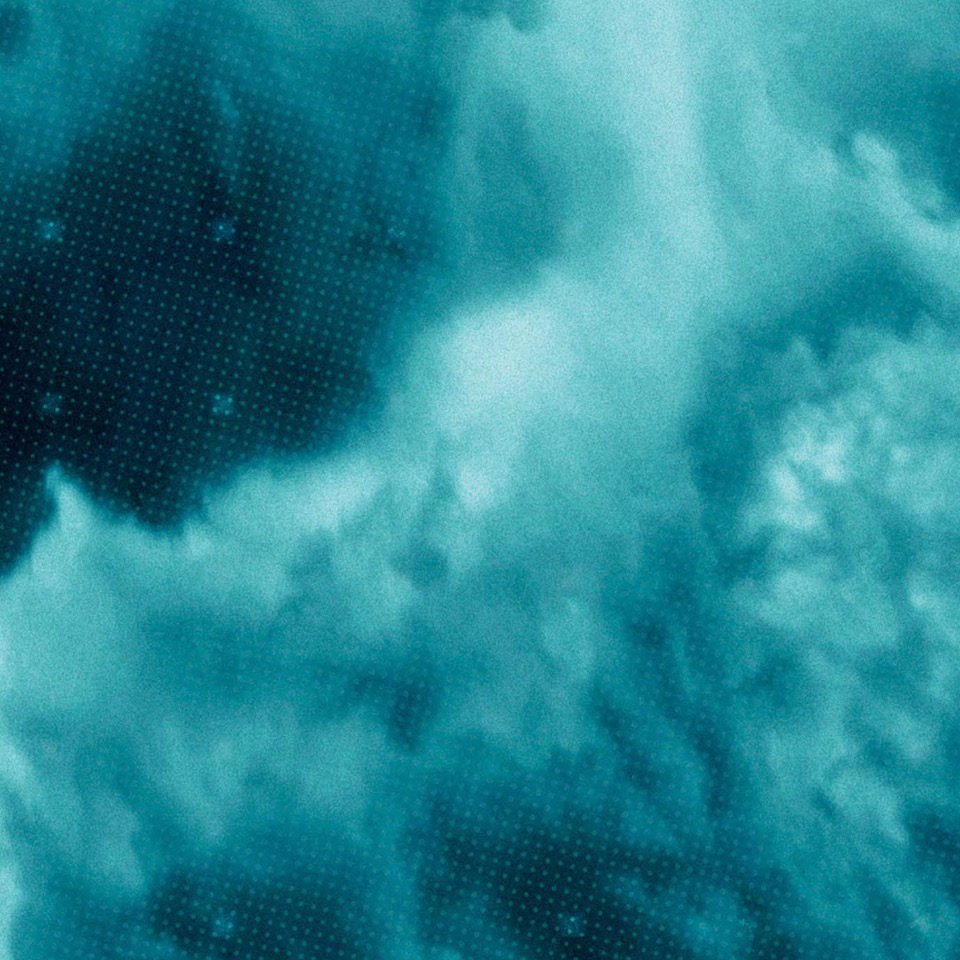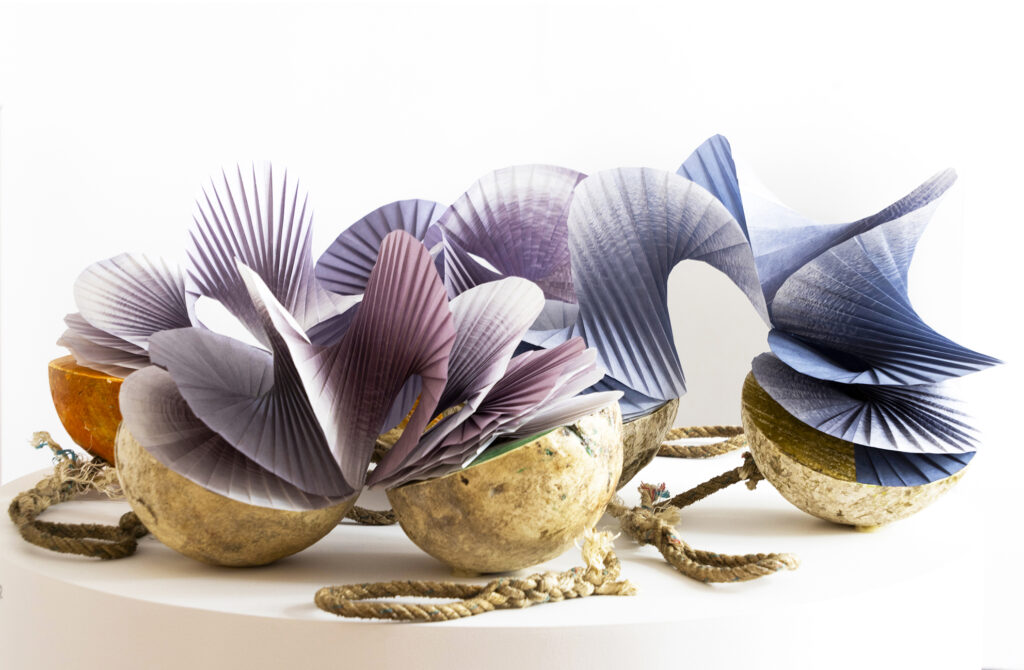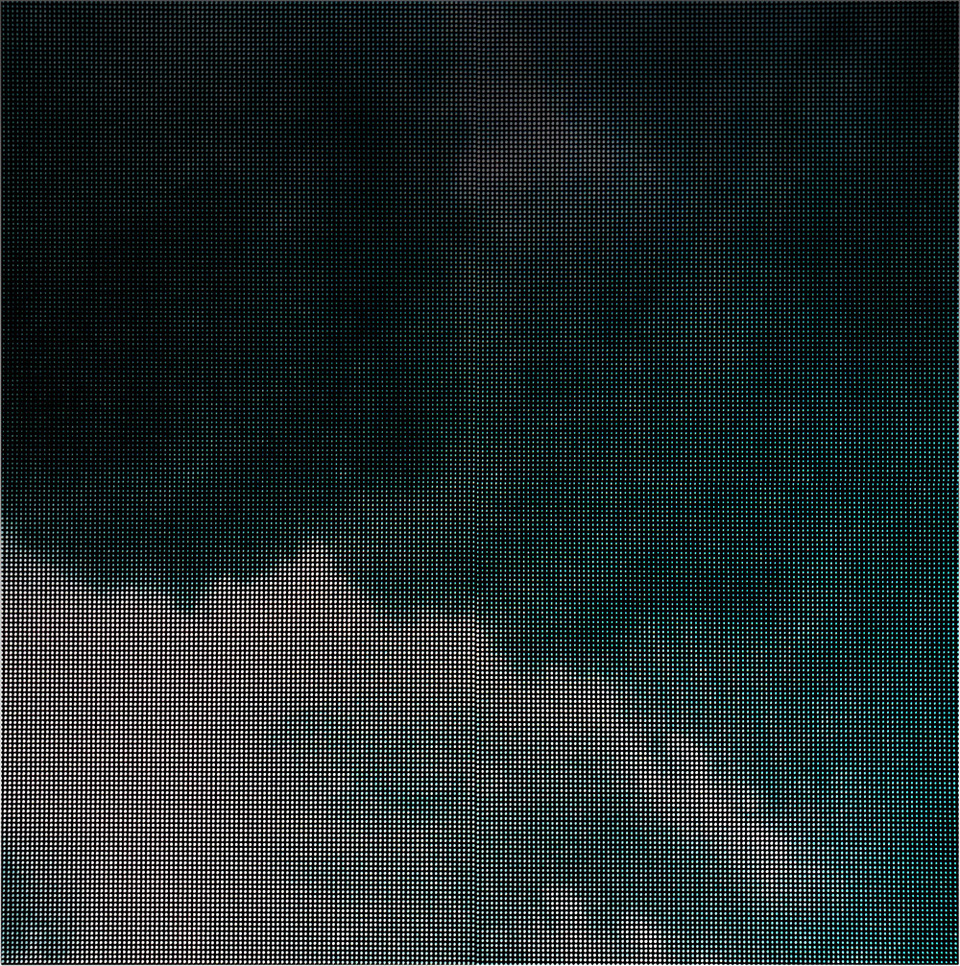
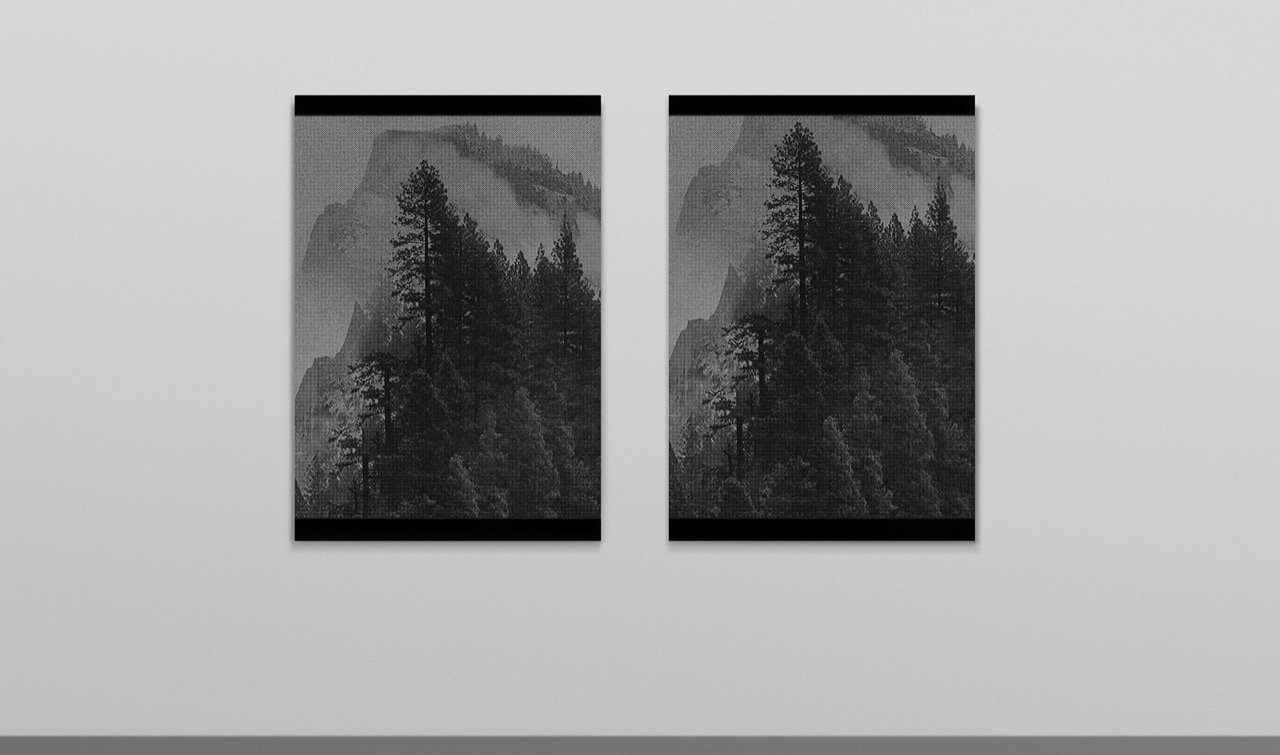
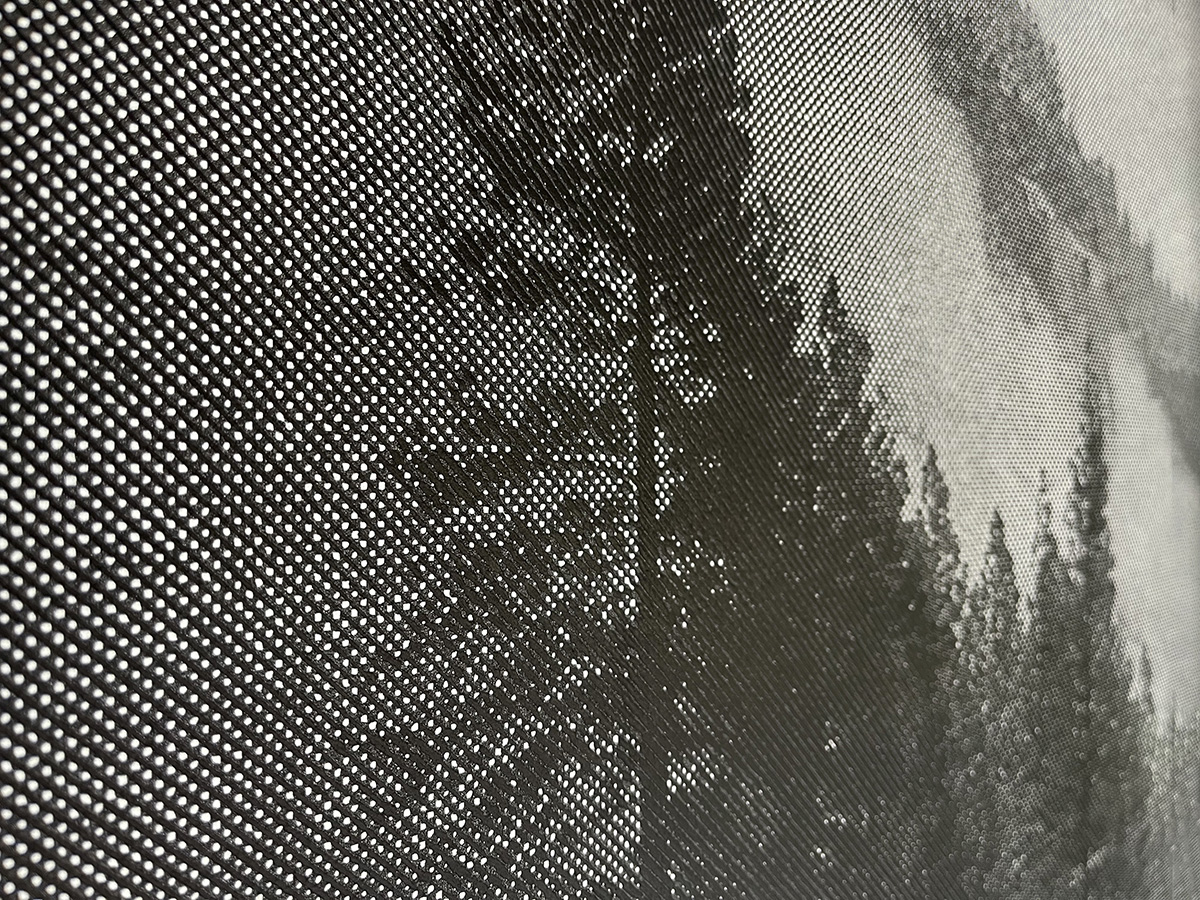
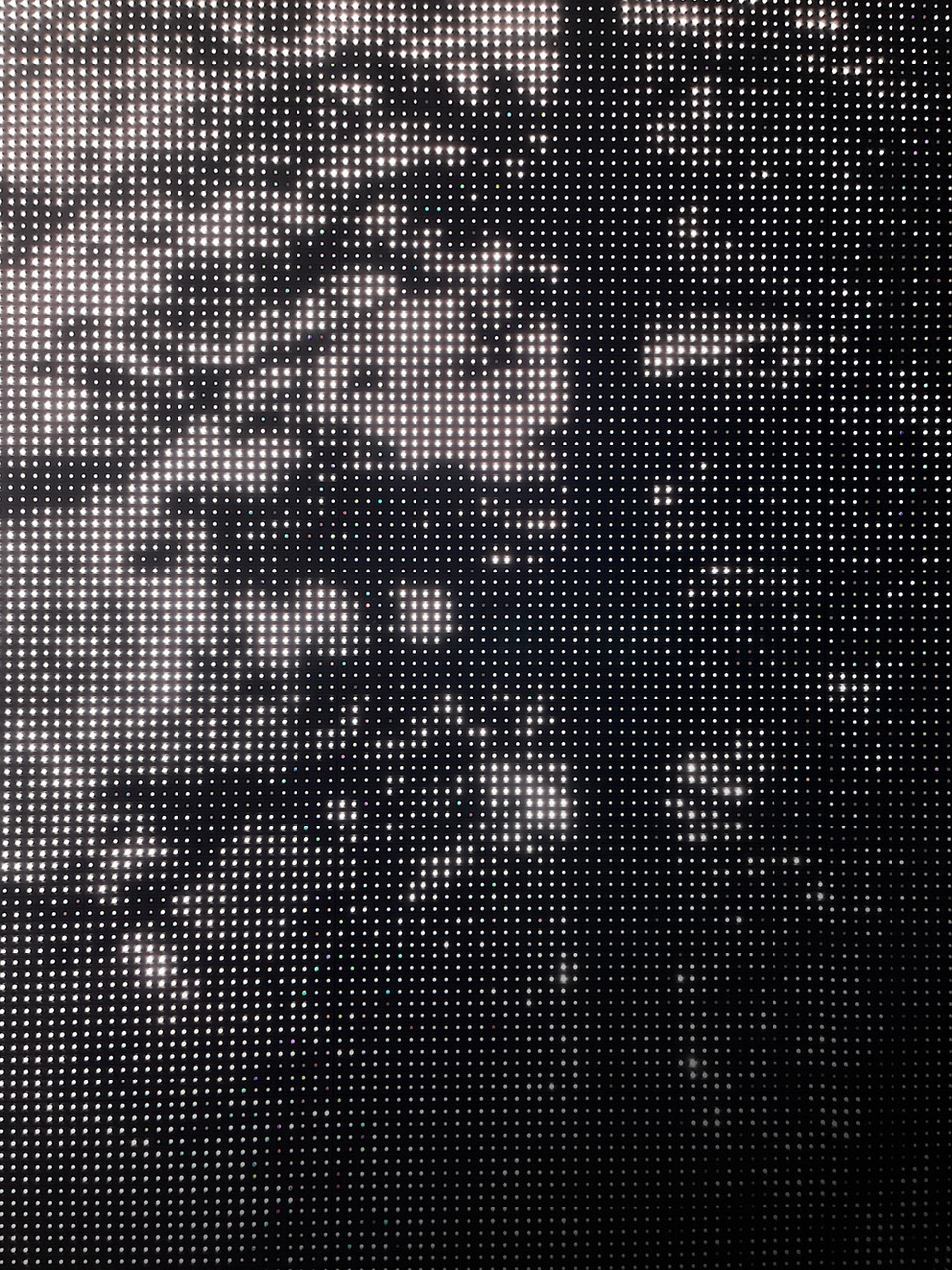
From top:
David McBurney:
Mavericks i, 2018
pigment print on cotton rag on aluminium
50 x 50 cm, edition of 2
Mavericks, 2023, (detail) 2023
Looped image on LED panels
50 x 50 cm x 2 panels
Mountain i and Mountain ii, 2023
screenprint and acrylic on cotton rag on wood
102 x 70 cm, edition of 2
Mountain i, (detail) 2023
screenprint and acrylic on cotton rag on wood
102 x 70 cm, edition of 2
Mountain iii, (detail) 2023
Looped image on LED panel
100 x 100 cm
Q: What were some of the foundation ideas for this exhibition project?
A: A mountain is once again a mountain references a Zen teaching which describes searching for the present and arriving at a view which has always been here.
“In the beginning, mountains are mountains and waters are waters; then, mountains are no longer mountains and waters are no longer waters; finally, mountains are once again mountains and waters once again waters”
My show reflects an interest in a recent threshold of perception relating to image reproduction. In the early teens of this century, technology in common digital displays stepped beyond the point where it was possible to discern individual pixels from a typical usage distance.
The image information in my show is sampled from the start of this period, where spectacular and zen-like views of landscape and nature, were curated and presented as digital wallpapers to showcase the impact (and invisible delivery) of high definition image reproduction.
Passing this visual threshold introduced a generation of images that were presented (or present) to the world in a way that had previously not been seen. Along with this, a particular world – and visual syntax – in the language of image reproduction had been rendered invisible.
My exhibition explores the preparation and delivery of this image information in print, as a method to reconsider these views.
Q: How did the artwork selection take place?
A: The ‘waters’ and ‘mountains’ of my exhibition sample image information from the Apple operating system as it began to transition all its consumer devices to high resolution displays. One series of works interpolate underwater surf images originally distributed with the 2013 Mac Operating System (OS) 10.9 Mavericks; and a series of screenprinted mountains reinterpret the view of Half Dome peak that was included with OS X 10.10 Yosemite in 2014.
Q: How does the exhibition manifest – what do visitors experience?
A: The show presents image information in matrices of digital light paired with intricate prints on paper to encourage speculative encounters. At a glance these views read as naturalistic, however closer examination reveals an invented language of representation emerging at a point between mechanical process, and the poetic perspectives of Zen.
Q: What are some of the key works and what subject matter do they deal with?
A: A key work in the show is a vertical scrolling, looped moving image of a misty forest-clad mountain scene. I’m trying to figure out what’s happening with these images as they move across the visible matrix of the LED panels that I’m using – and how this relates to print. The Zen teaching that titles this show, and the transformation of this image information reminds me of a great story about one of my own teachers:
When I was seventeen, my family and I moved from Northern Ireland to Australia. On the way we stayed in Vietnam for two months. My mum is one of fifteen brothers and sisters who were born in Saigon, and our move from Ireland to Australia gave us a chance to reconnect with family.
As well as immersing in the daily frenzy of Saigon as home, my father enrolled me in weekly lessons studying traditional silk painting with renowned Vietnamese artist Choé. At the time I had just completed my final high school art exams. Migration had cut short my school studies by twelve months, meaning that my final year exam was completely practice based; wholly focused on materials and drafting skills in the tradition of western figurative representation. Understanding and applying principals of perspectival drawing to construct and render the illusion of depth and space in landscape images was a prescribed requirement. Just weeks later, in Vietnam, approaching landscape under the non-western tutelage of Choé was a very different concept.
The reference was the same, but the rules were completely foreign. We worked using tourist postcards of picturesque Vietnamese scenes: pagodas glimpsed through bamboo forests; wet horizons of rice fields; house-boats floating on the flat Saigon river delta. But working with liquid pigment into a stretched surface of water-flooded silk does not lend itself to the construction of images with three-point perspective.
Of course I tried to paint according to my previous training, but there was a contingency in this new method of making images. Marks escaped distinction as they bloomed into surprising shapes, and scenes refused to conform to an arrangement of converging lines. I was lost inside a different concept of image. I looked to my teacher for help. Where was the starting point? How could I make sense of the scene?
Luckily my teacher could speak almost no English –and my Vietnamese is just terrible. Choé kindly took the brush from me and motioned toward the reference postcard image–as if to gather the image into his chest and into his body–he looked me meaningfully in the eye, and then slowly gestured his hands from his chest, silently out toward the silken surface of the blank image frame.
—
Returning now to the referenced text that titles this current exhibition. I wrote earlier about ‘arrival at a view, which has perhaps, always been here’. It’s many years since I stared blankly back at my teacher Choé – and the work I make still stubbornly retains the graphic construction of lines and points–but accompanying this now is my teacher’s quiet invitation, which is no longer foreign, to enter and inhabit the image of my world from more than just one individual and constructed perspective.
Q: What is it about the printmaking experience that you most appreciate?
A: I appreciate the way printmaking is able to collect and conjoin relationships. It can seem to be presenting discrete elements, like ink and paper or image and object, but then, all at once, mountains are once again mountains, and waters are once again waters.
—
A mountain is once again a mountain is at Tacit Galleries until 19 August, https://www.tacitart.com.au/
https://www.tacitart.com.au/collections/david-mcburney
—
Join the PCA and become a member. You’ll get the fine-art quarterly print magazine Imprint, free promotion of your exhibitions, discounts on art materials and a range of other exclusive benefits.

